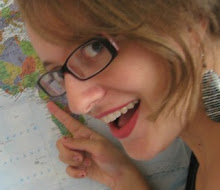Since I’ve been planning my own lessons in Laari, I’ve been dredging up from the recesses of my mind the things that I learned back in 2002 at Oregon SIL in my Language and Culture Learning class. Here are a few principles of language learning that you’ll want to apply if you’re wanting to break the great American monolingual mold.
• Get comprehensible input. I don’t know why, but when we start learning a language we want to collect long lists of words and try to memorize complicated expressions right from the start. We should begin by spending time listening to things we can understand, which often means using concrete objects. When I wanted to learn the names of different food items, I brought in a basket of food, learned the phrase “What do you call this in Laari?”, and began pointing to items and writing down their names. Then I had my consultant ask me to give him or touch different items as he called them out. Sometimes he can’t resist making it more complicated and adding in new things, but I just keep reminding him that I need to focus on what I can actually understand. Sometimes he can add new things in a comprehensible way, such as by showing me what he wants me to do as he gives the command.
• This leads us to another important principle: Total Physical Response (TPR). This means actually doing or touching the thing you are talking about. Sit down and stand up as you learn those verbs. Pick up the tomato and the onion as you memorize those words. Our brains just function better this way. Also, it allows you to associate the new vocabulary with the item or action itself, rather than with the word you know in English.
• Listen first. This is just a good principle for life in general, eh? In language learning it means hearing the words and phrases many times before you try to pronounce them. One good tool for doing this is to make recordings of the vocabulary to listen to over and over. Another way is by doing drills where you respond to commands given by your consultant. Only after hearing and recognizing words many times should you attempt to use them yourself; and you’ll be surprised how much you can say when you open your mouth the first time if you’ll really spent a good amount of time listening first.
• Another handy tool I like is to use photos. I cut out pictures from magazines, looking for different kinds of people and common actions such as someone washing their face or eating. I started by learning phrases like “This is a man,” “These are women,” “This is a girl,” etc. Then I added descriptors: “He is tall,” “There are two women,” “They are beautiful.” etc. Next I plan on describing actions in the photos (“The women are dancing”) and talking about the setting (“The girls are in the kitchen”). For verb practice you can describe the picture using different tenses (“Yesterday the women danced.”). More advanced speakers can make up stories about the photo, describing what happened before and after the present scene (“The women were tired after coming home from work, so they danced and now they feel happy.”).
Those are just a few of the principles of language learning that I have been applying and it has proven to be a fun way to study. My consultant is impressed with the method and thinks I’m learning quickly. Bon apprentissage! Happy studies!
Tuesday, June 17, 2008
Subscribe to:
Post Comments (Atom)

2 comments:
Jessica, I don't think you know how famous you really are. I was on my bike to work today and got completely drenched in some ice cold rain, brrr...
Well, I'm going to be pinching your handy tips for my team to Cameroon.
Bless!
N
just an idea what helped us immensely: we used our digital camera video mode for short clips of one minute on certain topics -after the language session we listened and watched the speaker and tried to understand what he said... still hard though :-) the next day we analyzed it with our language helper.
bon courage!!!
Sjoerd www.lifeinniger.blogspot.com
Post a Comment